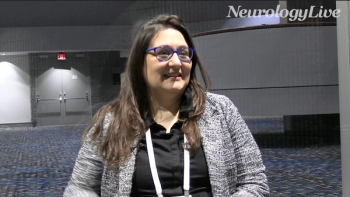
Subthalamic Focused Ultrasound Outperforms Ventral Intermediate Thalamotomy in Sustained Parkinson Disease Tremor Control
Key Takeaways
- STN-FUS demonstrated longer-lasting tremor control and greater improvement in bradykinesia and motor status compared to Vim-FUS.
- At 12 months, STN-FUS showed superior reduction in resting, kinetic, and postural tremors, with 47.5% full responders versus 8.7% in Vim-FUS.
STN-FUS provided more sustained tremor reduction, improved bradykinesia, and had a higher responder rate at 12 months, though both treatments showed comparable reductions in rigidity and motor scores.
In a comparative, 2-center study of patients with Parkinson disease (PD) with medication-refractory tremor, results revealed that both unilateral focused ultrasound ventral intermediate thalamotomy (Vim-FUS) and subthalamic nucleus FUS (STN-FUS) are effective options; however, the effects of STN-FUS lasted longer. All told, these data suggest targeting the STN might offer a more enduring control over tremor compared with Vim-FUS, coupled with higher benefit on bradykinesia and global motor status.1
Published in Movement Disorders, the retrospective study featured 63 patients, 23 of which were assigned to Vim-FUS and 40 assigned to STN-FUS. In the analysis, tremor was assessed using the sum of the Movement Disorder Society-Unified Parkinson’s Disease Rating Scale (MDS-UPDRS) unilateral items 3.15 (postural upper limb tremor), 3.16 (upper limb kinetic tremor), and 3.17 (upper and lower limb resting tremor), ranging 0-16 points, with higher scores indicating more severe tremor.
Senior author Raul Martinez-Fernández, MD, PhD, a neurologist at Grupo Hospitales De Madrid, and colleagues, showed that both therapeutic approaches were effective, as significant tremor improvement on the treated side was found at both 4- and 12-month time points (P <.001). Despite similarities in tremor reduction at 4 months between the 2 treatment arms, the tremor reduction at 12 months was greater in STN-FUS-treated patients (4.4 points [±2.0]; 95% CI, 3.7-5.0; 76%) compared with the Vim-FUS group (2.7 points [±3.7]; 95% CI, 1.1-4.3; 46%). Overall, this treatment difference at 12 months was significant between the groups (P = .012).
"The first and main limitation of our study is its retrospective nature” the study authors noted.1 "The number of patients lost to follow-up is significant. The follow-up rate was similar in both groups, which, while reassuring regarding their comparability, raises the possibility of a bias towards capturing favorable outcomes. This highlights the need to interpret our findings with caution. A prospective, randomized comparative trial would be ideal, but such a comparative study is not planned in the near future."
At baseline, STN-FUS-treated patients were significantly younger than Vim-FUS patients (58.6 vs. 70.8 years, P < 0.001), with comparable disease durations (STN-FUS: 6.1 years, Vim-FUS: 6.7 years, P = 0.48) and similar tremor severity (P = 0.7). However, STN-FUS patients had significantly higher bradykinesia (P = 0.004) and MDS-UPDRS-IV scores (P < 0.001). After 12 months of treatment, 47.5% of patients in the STN-FUS group (19 of 40) were considered full responders, compared with only 8.7% (2 of 23) of those in the Vim-FUS group (P = .002).
Those in the STN-FUS group also showed better effects on resting tremor (69% reduction vs 31% reduction; P <.001), kinetic tremor (81% vs 49%; P <.001), and postural tremor (83% vs 63%; P <.001) at 12 months. During this time, investigators also observed greater reductions in bradykinesia and overall motor features. Specifically, those in the STN-FUS group had bradykinesia reduction of 5.0 (±2.5; 49%) points whereas those in the Vim-FUS group had reductions of 2.3 (±3.6; 27%) points.
READ MORE:
Additional data revealed that the STN-FUS group had a greater reduction in the treated side (11.1 [±3.6] points, 58%) compared to the Vim-FUS group (6.7 [±6.7] points, 38%; P = 0.01). A similar effect was seen in MDS-UPDRS-III (P = 0.024). In addition, post hoc testing revealed a 40% reduction with STN-FUS and 25% with Vim-FUS, and both treatments equally reduced rigidity, MDS-UPDRS-II, MDS-UPDRS-IV, and total LEDD.
In terms of safety, gait imbalance, found in 53% of STN-FUS-treated patients and 70% of Vim-FUS-treated patients, was the most frequent post-procedural adverse event (AE); however, while all cases in STN-FUS were mild, 13% of Vim-FUS-treated patients experienced moderate imbalance. Notably, off-medication dyskinesia was found only in the STN-FUS group (15%0 during the immediate post-procedural period. New-onset levodopa-induced dyskinesia, while mostly mild, occurred within the first days post-procedure more frequently in the STN-FUS group (27.5%) vs the Vim-FUS cohort (4%).
Following adjustment of medication, mild dyskinesia while on-medication persisted in 3 STN-FUS patients at 12 months vs none in the Vim-FUS group. While sensory disturbances were more predominant in the Vim-FUS group, post-procedural speech disturbances were more common among STN-FUS patients (48% vs 22%). Of note, all speech disturbances were mild and persisted by 12 months in only 3% of STN-FUS patients vs 9% in Vim-FUS. Contralateral motor weakness was found in a similar number of patients in both groups (STN-FUS: 15%; Vim-FUS: 13%), while progressive weight gain was found only in STN-FUS patients (18%, decreasing to 10% at 12 months).
Martinez-Fernandez et al concluded, "Although safety profiles differed in nature between these two treatment modalities, most reported events were of mild intensity and transient. Patients’ frailty and tolerability to the procedure are factors to consider when choosing between treatments. Prospective studies are advisable; however, in the meantime, our data should serve to help in deciding which approach could be better considered for each individual patient with PD."
REFERENCE
1. Paschen S, Natera-Villalba E, Pineda-Pardo JA, et al. Comparative Study of Focused Ultrasound Unilateral Thalamotomy and Subthalamotomy for Medication-Refractory Parkinson's Disease Tremor. Move Disord. Published online March 3, 2025. doi:10.1002/mds.30159
Newsletter
Keep your finger on the pulse of neurology—subscribe to NeurologyLive for expert interviews, new data, and breakthrough treatment updates.































